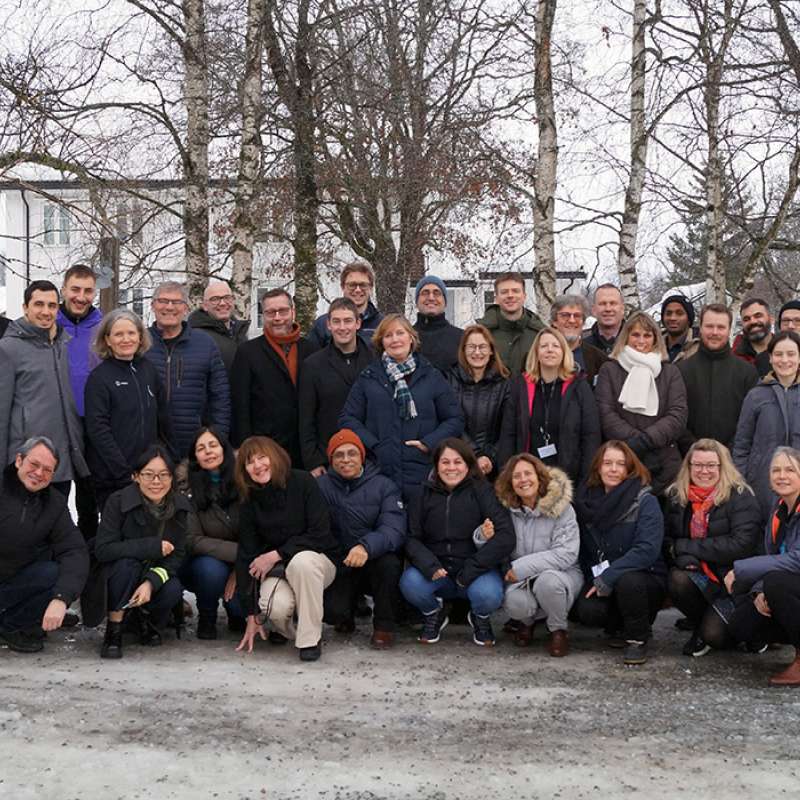Dalphy Ondine Camira Harteveld
Forsker
Forfattere
Dalphy Ondine Camira Harteveld Ola Sigurd Øygard Dale Håvard Vedå Vinh Hong Le Jorunn Børve Torfinn Torp Arne StensvandSammendrag
Det er ikke registrert sammendrag
Sammendrag
Det er ikke registrert sammendrag
Forfattere
Alexey Mikaberidze Christian Cruz Ayalsew Zerihun Abel Barreto Pieter S. Beck Rocío Calderón Carlos Camino Rebecca Campbell Stephanie Delalieux Frederic Fabre Elin Falla Stuart Fraser Kaitlin Gold Carlos Gongora-Canul Frédéric Hamelin Dalphy Ondine Camira Harteveld Cheng-Fang Hong Melen Leclerc Da-Young Lee Murillo Lobo Jr Anne-Katrin Mahlein Emily McLay Paul Melloy Stephen Parnell Uwe Rascher Jack Rich Irene Sarlotti Samuel Soubeyrand Susie Sprague Antony Surano Sandhya Takooree Thomas Taylor Suzanne Touzeau Pablo Zarco-Tejada Nik CunniffeSammendrag
Plant diseases impair yield and quality of crops and threaten the health of natural plant communities. Epidemiological models can predict disease and inform management. However, data are scarce, since traditional methods to measure plant diseases are resource intensive and this often limits model performance. Optical sensing offers a methodology to acquire detailed data on plant diseases across various spatial and temporal scales. Key technologies include multispectral, hyperspectral and thermal imaging, and light detection and ranging; the associated sensors can be installed on ground-based platforms, uncrewed aerial vehicles, aeroplanes and satellites. However, despite enormous potential for synergy, optical sensing and epidemiological modelling have rarely been integrated. To address this gap, we first review the state-of-the-art to develop a common language accessible to both research communities. We then explore the opportunities and challenges in combining optical sensing with epidemiological modelling. We discuss how optical sensing can inform epidemiological modelling by improving model selection and parameterisation and providing accurate maps of host plants. Epidemiological modelling can inform optical sensing by boosting measurement accuracy, improving data interpretation and optimising sensor deployment. We consider outstanding challenges in: A) identifying particular diseases; B) data availability, quality and resolution, C) linking optical sensing and epidemiological modelling, and D) emerging diseases. We conclude with recommendations to motivate and shape research and practice in both fields. Among other suggestions, we propose to standardise methods and protocols for optical sensing of plant health and develop open access databases including both optical sensing data and epidemiological models to foster cross-disciplinary work.

Divisjon for bioteknologi og plantehelse
Plant Pest prevention through technology-guided monitoring and site-specific control
One of the ambitious goals of the Farm2Fork strategy is to reduce the use of pesticides in the EU by 50%. The expected increase in plant pests due to climate change, international trade and the intensification of food production systems offsets this target.

Divisjon for bioteknologi og plantehelse
NordForsk: Innovative sustainable Nordic-Baltic horticulture

Divisjon for bioteknologi og plantehelse
Plant Pest Prevention through technology-guided monitoring and site-specific control (PurPest)
The main objective of PurPest is to control serious plant pests during import and to manage them in the field by developing a unique concept enabling pest detection in a timely and non-invasive manner.
